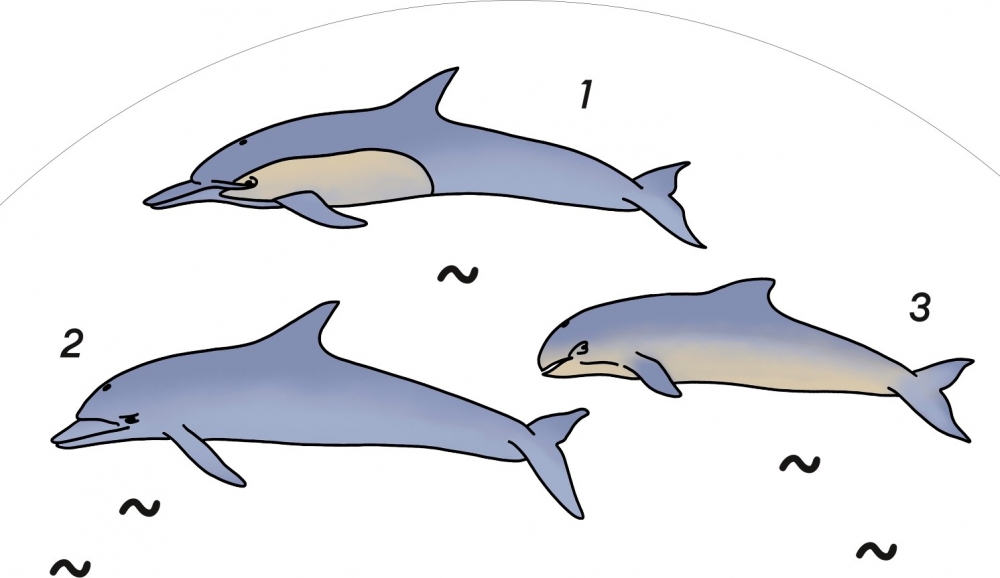Dolphins
Dolphines look like big fish, but actually they are mammals. They belong to the group of Cetacea. In the Black sea there are three types of dolphins.
1. Common
2. Common bottlenose dolphin
3. Harbour porpoise

They are very similar, but also differ in length, weight, snout shape and fin shape. The common bottlenose dolphin reaches the greatest length - up to 3.7 m, and the smallest is the harbour porpoise - only 1.7 m (as long as an adult human). Again, the common bottlenose dolphin weighs the most - up to 200 kg (rarely up to 400 kg), and the harbour porpoise - only up to 65 kg.
They have a smooth, rubber-looking skin. Usually they are colored in a black, white and gray mix. The dolphins can be distinguished easily from the fish by their horizontal tail – the fish have a vertical one. Dolphins must resurface to breathe air. They can dive up to 240 m and stay there more than 8 minutes.
They breathe through one nostril located on top of the head.
Dolphins are extremely intelligent and very playful. Their graceful leaps or the amazing synchrony with which they sometimes accompany boats at sea can often be observed from the shore. They live together in groups where they look after their young. They use sounds to communicate with each other. A particular kind of sound, inaudible to the human ear, serves to orient them. A dolphin makes a sound that is reflected in underwater objects - fish, rocks, obstacles - and when it returns to the animal, it knows where they are.
Dolphins are very vulnerable animals. They often get entangled in fishing nets. Noise from ship propellers and underwater drilling, pollution, habitat disturbance and the decline in the number and species of fish are the greatest dangers to them. All dolphin species are therefore threatened with extinction and protected by law.



